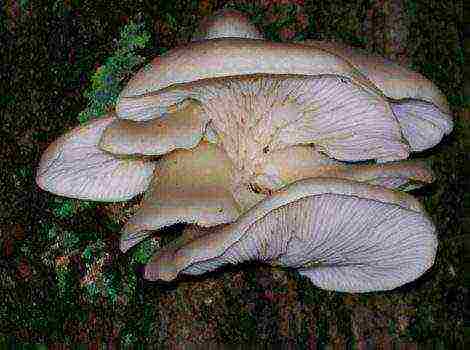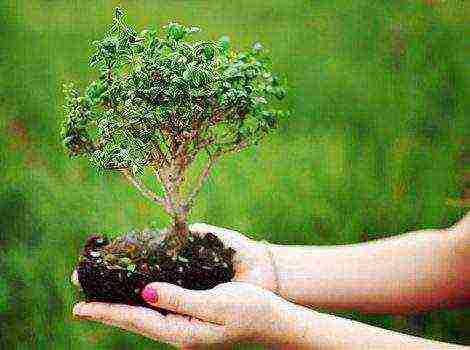Pike is one of the most famous freshwater fish in Russia. It is of great interest for sport fishing, is loved by commercial fishermen, and is highly regarded in cooking. Even in Russian culture, the pike fish managed to leave a significant mark, becoming a character in popular children's fairy tales and instructive fables and proverbs. Today, pike is not only caught in natural conditions, but also bred artificially.
The content of the article:
- Pike fish - description and habitat
- Pike behavior
- Breeding pike
- Economic value of pike
- Pike in cooking
- Artificial breeding of pike
Pike fish - description and habitat
Pikes are a biological genus of carnivorous freshwater fish, which is the only representative of the pike family. This genus includes, according to different classifications, from 6 to 8 independent species. (By the way, the armored pike is a fish of a completely different biological family and has nothing to do with real pikes). In Russia, under the name pike, by default, it is customary to understand the species common pike, which is widespread in Europe, in most of Siberia, in Canada and in the northeastern United States.
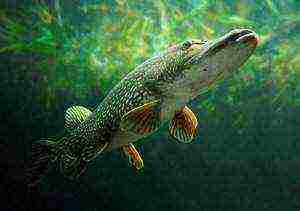
The maximum length of a pike reaches 1.5 m with a weight of up to 35 kg, but in practice, individuals larger than 1 m and heavier than 8 kg are extremely rare. This fish has an oblong cylindrical body and a large head with a wide flattened mouth. Body color is quite variable and depends heavily on the environment in which the fish lives. Moreover, not only the color varies (from greenish to brown), but also the pattern (spots and stripes are possible). The single fins of the pike are yellowish-gray (often spotted); paired fins are orange. Sexual differences are noticeable only in the genital area.
The lower jaw of the pike protrudes noticeably forward and is covered with large teeth of different sizes, which simplifies the secure grip of the victim. On the upper jaw, the teeth are smaller and directed towards the pharynx, which prevents the victim from escaping from the pike mouth.
Pike behavior
Pike is a type of fish that hunts and is not at all interested in plant food. It lives in flowing lakes and rivers with a calm flow, but is not found in small stagnant ponds and fast rocky rivers with cold water.
The pike prefers to hide near underwater thickets, where it can easily ambush small fish and its other victims. The basis of the pike diet is made up of such species as roach, silver bream, gudgeon, perch, ruff, bastard, etc. At the same time, pikes do not hesitate to eat young animals of their own species. In spring and early summer, this predator preys on frogs and young crayfish. Large pikes can grab ducklings and small mammals (rats, squirrels, etc.), for one reason or another, caught in the water. There are known cases of pike attacks on adult ducks.
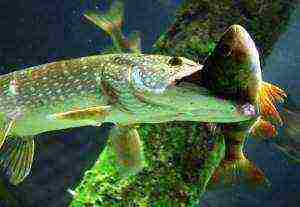
In general, pikes are not at all afraid to hunt large prey. The prey of this predator quite often becomes fish, the size of which is 50% or even 60% of the size of the pike itself. However, medium-sized pikes, that is, about half a meter, feed mainly on numerous "weedy" fish, so this species is invariably used in fish farms to exterminate small ruff and perch.
Like many other predatory fish, the pike hunts from an ambush, hiding in the thickets of algae, from where it rushes to its prey. If the ambush is unsuccessful, the pike almost never sets off in pursuit. She always swallows the caught prey from the head, turning it in the right direction if necessary. In hunting, pike is helped not only by sight, but also by a very sensitive lateral line.
Breeding pike
Under natural conditions, females of this species begin to reproduce at the age of two to three years, males - at four years.
Spawning starts soon after the ice melts, when the water temperature does not exceed 3-6 ° C. Females move to shallow water (depth up to one meter), where they begin to splash noisily and actively move within the spawning grounds. Each female is accompanied by several males.
The female is capable of laying from 17 to 215 thousand eggs. They are quite large in pike - 3 mm in diameter - and the first days are quite sticky, therefore they often stick to aquatic vegetation. But then most of them slide to the bottom, where their further development takes place.
Since the eggs are in shallow water from the very beginning, with a significant drop in the water level in the reservoir, most of the eggs perish. This, for example, is typical for reservoirs, the water level in which is regulated by man and therefore is very unstable.
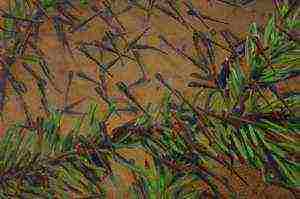
The larvae hatch from eggs during the entire second week after spawning and switch to self-feeding, eating microscopic crustaceans. Reaching a length of 12-15 mm, young pike go on to the larvae of carp, which spawns after the pike. Five-centimeter young pikes finally switch to fish.
Interestingly, river pike fish often spawn in flooded lakes, which, after the end of the spring flood, quickly lose contact with the river. With a shortage of food in such reservoirs, hatched fry grow extremely unevenly. Representatives of the same generation may differ in size by 2 or more times. In such conditions, the food chain is built on the basis of cannibalism, when very small pike feed on plankton, and young animals feed on fry, while themselves becoming prey for last year's and older pikes. This happens especially often in Yakutia and in the north of Canada, where such pike lakes exist on a permanent basis.
Economic value of pike
In commercial fishing, fishermen rarely rely on pike. It is usually only a good addition to the target mass fish. This happens for quite obvious reasons: pike is a predator, and therefore, by definition, there will be an order of magnitude less fish in a balanced food chain of a river or lake than other fish.
But in sports fishing, pike is one of the most coveted trophies, for which many fishermen purposefully hunt. The desire to catch a pike is inherent in sports fishing enthusiasts, not only because it is a very large fish, but also because it is not so easy to catch it. A worthy contender even for an experienced angler, pike has much higher demands on him than bream or carp. Only those who are able to show patience, caution and resourcefulness can catch a pike. In addition, pike is a large-sized family of fish, so it sometimes takes extraordinary strength to pull it out of the water.

Finally, this predator is a godsend for fish farms. If you plan to adapt a large natural reservoir for breeding, first you need to reduce the population of trash fish in it - perch, roach, crucian carp. For these purposes, a pike is launched into the reservoir, which in one or two years is able to "put things in order" in the reservoir. Also, pike can cleanse the population of commercial fish from weak and sick individuals. True, you always need to strictly ensure that the pike does not massively knock out commercial fish, and in any case, you need to catch large pikes that are harmful to the fish farming business.
Pike in cooking
Since ancient times, among all freshwater fish, pike has always been considered a delicacy. Not a single sumptuous feast could be complete without one or more pike dishes.
Even medieval doctors assured that this is one of the best fish, because it has tremendous health benefits. Over the past centuries, the opinion of doctors on this matter has not changed significantly, but only found additional scientific justification.Pike meat contains many B vitamins (beneficial for the nervous system), potassium (normalizes blood pressure), magnesium (good for the heart), phosphorus (affects the brain) and other substances.
Like any fish, pike is a dietary product. It contains only 1% fat, but proteins are as much as 18%. The energy value of pike meat does not exceed 84 kcal per 100 g. Thus, pike is ideal for those who follow the figure.
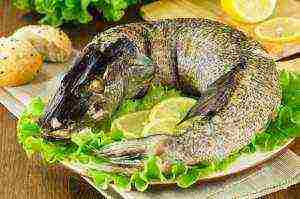
This fish has dryish but tender flesh. Moreover, experts claim that the larger the pike, the more pleasant the taste of the meat. However, very large fish are rather dry, so they cook them in such a way as to saturate them with moisture. For example, stew with vegetables, stuffed with lard, meat and vegetables, cook fish soup, etc.
In general, the variety of pike dishes is quite large, and the culinary tradition of preparing this fish goes back hundreds of years. Pike is baked, fried, stewed, boiled, stuffed, put into soup, cutlets, pates, etc. are made. The only drawback of the pike, for which many do not like it, is its boneiness.
Artificial breeding of pike
As follows from the description, pike is a predatory fish, therefore it cannot be used in juvenile and nursery ponds with carp. It is also not used in trout ponds. But she shows herself well in natural lakes, rivers and ponds, where there are a lot of trash fish, which she will eat.
Pike can be successfully bred in lakes with abundant vegetation. In such places, there are always a lot of small fish, but here it will be easy for pike to hunt. But in reservoirs poor in vegetation, where there are few forage fish, it will not work to breed a pike successfully, since it eats its own young from hunger.
With artificial breeding, pike gains weight four times faster than in natural conditions. With enough food fish, pike underyearlings weigh on average about 400 g, and some specimens sometimes twice as much.
Breeding underyearlings are raised in feeding ponds, usually together with carp. Many fish breeders leave only replacement young stock for the next year, and the rest of the livestock are sent for sale. Second-year pikes are allowed to grow up in uterine reservoirs of carp, where they will eat carp fry and weed crucian carp. In winter, pikes are sent to earthen cages, where one and a half to two dozen underyearlings of crucian carp or roach are planted for one pike.
If the fishery does not have its own broodstock, “wild” pikes from natural reservoirs are used to obtain young animals. Moreover, due to the peculiarities of their physiology, at least five males have to be taken per female. For reproduction, earthen cages or small ponds with abundant bottom vegetation are used. The pike will spawn only at it.
The larvae are harvested from the cages on the third day after their appearance. No later than the fifteenth day after hatching, the larvae are sent to feeding ponds, where they can find food for themselves. So that the larvae do not remain on the underwater vegetation in the process of catching from the spawning ground, it must first be removed.
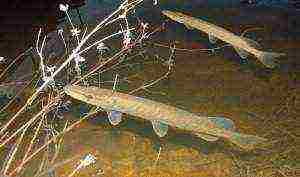
Since the reproduction of pike in ponds is a very troublesome task, it is more preferable to use special devices in which the eggs are inseminated and then incubated artificially.
The survival rates of young animals in feeding reservoirs reach an average of about 50%. It is optimal to plant fry in the following proportion: in ponds where there is an abundance of trash fish - no more than 400 per hectare; where there is little of it - no more than 250; where there is none - up to 120 fry. In large reservoirs, which are lowered every two years, from three hundred fry of pike are planted per hectare of water surface.
The productivity of pike in the second year of cultivation reaches one and a half centners per hectare.
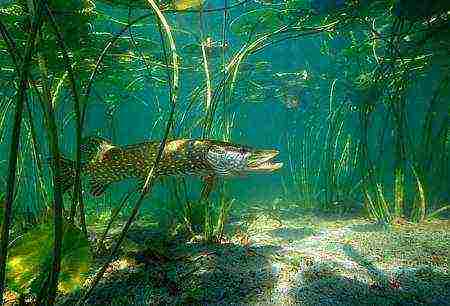
Pike - this is the largest of all freshwater fish, it is considered a predator, but in fact, all of its prey is small fish, which we often do not even notice.The pike meat is quite tasty, it goes well in any form - even smoked, even fried, at least in any other. It is cut into salads, served with side dishes, and even stuffed. The size of a pike can reach almost one and a half meters, and its weight (with a healthy lifestyle and good nutrition) is 60 kilograms. Human parameters!
Pike meat is not only tasty, but also healthy, because it contains a lot vitamins - A, C, E, P and almost all vitamins of group B. In pike among all trace elements, iron and zinc are in the lead, it is energetic, but low-fat. Fat it will hardly contain 2 percent, even less. Due to this composition, pike meat is considered a dietary product, it is prescribed for sick and weakened people.
Pike caviar has an unmatched taste, especially salty. Pike is not cheap, caviar - even more so. That is why it is quite reasonable to breed pike in your pond. If there is no pond, you can organize it - then things will go small, the pike will reproduce and grow by itself. Just have time to catch it.
It is not demanding on conditions, the pond may be overgrown, the water does not have to be transparent, as is desirable when breeding sturgeon, for example. Having settled pikes for breeding, monitor their activity and behavior. Sick fish should not be allowed to live in the pond.
Pike eats, as we have already said, small fish such as roach. She not only saves you money, she also works as a nurse in your pond. Despite all the independence of the pike, some measures must be taken to preserve the offspring.
Pikes are born very tiny, less than a centimeter, and slowly gain weight. In a month it is 1 gram. Further more. At the age of three, pikes are already beginning to breed. They tolerate low oxygen content in water and sudden temperature changes, they can even live in a thirty-degree hell. The fish lives up to 30 years of age.
So, in warmer water after cold weather (about 10 degrees) begins spawning... The pike lays eggs in thousands, tens of thousands each. All this goodness does not fall into the water, but is securely attached to the reed stems in the water. It is necessary not to miss the moment and catch the caviar with a special nylon net. When the fry hatch, they begin to surf the pond in search of food, and can eat each other. Therefore, divide the harvested crop into several "portions" and plant it in different artificial reservoirs, small.
Considering that it is impossible to allow ripe caviar to be carried away by the current, it is necessary to provide for "catchy". Well, if some suitable grass is already growing in the pond, that hedgehog is a reed. If it is not there, you need to plant it. For example, sedge - it is well suited for these purposes. When you see that after spawning the abdomen of a female pike swells and becomes soft, know that she is already ready to lay eggs. It is not necessary to put pressure on the fish, otherwise you will “cripple” the young growth.
The first time (one week after they hatch) feed them alive zooplankton, you can buy it freely. When the fry grow up, they can be added to the pond. The first days they feed on the inner yolk, which remained after birth. Then you need to take care of their food. Keep in mind that the fry are very tiny, and it makes no sense to throw more than 40 grams of zooplankton even on a crowd of ten thousand.
Although pike meat is considered bony, this does not mean that there is little meat in this fish. Fillet of pike makes up at least 60 percent, and in France, for example, it is highly valued precisely because of its “lightness” for the stomach.
Breeding a pike in any case makes sense, especially if you breed others with this fish, for example, carp. After all, no one cleans a pond as well as pike. They eat parasites, leeches, beetles, even moths. The pond becomes much cleaner with their appearance, and this helps to live and reproduce for the neighboring fish too, not only for the pike itself.
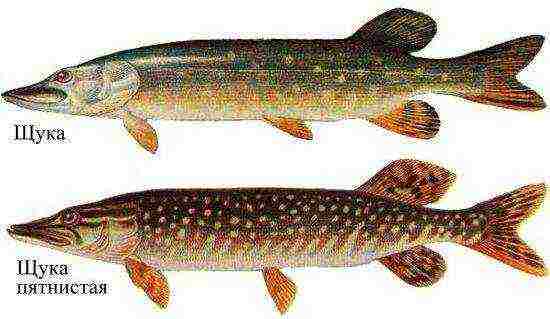 The value of the pike as an object of cultivation in ponds lies in the fact that by eating small, non-economic "trash" fish, it grows well and gives high-quality meat.
The value of the pike as an object of cultivation in ponds lies in the fact that by eating small, non-economic "trash" fish, it grows well and gives high-quality meat.
By destroying trash fish, which is a food competitor to fish such as carp, carp and other fish, Pike significantly improves the nutritional conditions of the latter and thereby contributes to their faster growth. In addition, by eating weakened as a result of diseases, seedy, underdeveloped fish, the pike is a kind of orderly, contributing to the health of the economy. All this ultimately leads to an increase in natural fish productivity and an expansion of the range of products produced by pond farms.
At present, pike is beginning to enter (though not yet everywhere) into the pond culture as an independent breeding object.
In the absence of their own broodstock (grown on the farm), pikes from natural reservoirs (rivers, lakes) that go for spawning or harvested in the fall are used as producers. In winter, pike producers are kept in special flowing earthen cages or small well-fished ponds, feeding them live weed fish. For the winter, feed fish is given to the pike at the rate of 3-5% of the live weight of the pike per day.
Pike spawning carried out in early spring immediately after the ice breaks down at a water temperature of about 5-8 ° C in small non-silted ponds, on the bottom and slopes of the dams of which there is dried last year's vegetation. In the absence of the latter, artificial spawning grounds are arranged in the form of bunches of dry grass, fixed on the bottom and slopes of dams at a depth of at least 0.5 m. For spawning, pike producers with fully ripe sex products are selected.
Each nest of pike breeders is made up of one female and at least three males. One nest of pike producers is planted on about 300 m2 of the spawning pond. Before spawning, pike breeders are planted for 5 minutes in preventive baths of 5% sodium chloride solution. Spawning usually takes place on the 3rd or 4th day (sometimes on the second day) after the broodstock has been planted. After spawning, pike breeders are taken out of the pond, carefully so as not to damage the developing eggs.
After 7-26 days (depending on the water temperature) larvae hatch from the laid eggs with a relatively large yolk sac, due to which they feed for the first 8-10 days, after which they switch to mixed and then active feeding. Pike fry that have switched to active feeding (at the age of 14-16 days after hatching from eggs) are caught from spawning ponds and transplanted as additional fish into feeding or other (for example, brood) carp ponds according to the norms.
Young pike are caught from spawning ponds very carefully with the help of special traps installed in front of the drain bed, slowly draining the water and at the same time giving a small inflow of fresh water.
When breeding pike in ponds, it is very important to correctly set the time for catching juveniles from spawning ponds. Before the larvae begin to actively feed, they lie motionless on the bottom: if the juveniles that have begun to feed actively are kept for several days in the spawning pond, then the pike will begin to eat each other and their number will therefore greatly decrease.
With timely catch of pike fry from spawning ponds, 5 to 15 thousand pieces are obtained from one nest. juveniles, depending on the size of the female. Taking into account this indicator and the need for juvenile pike for planting in ponds, determine the amount of pike breeding stock required for the economy. The latter is sometimes formed not only from fish caught in natural reservoirs, but also from those grown in ponds. To do this, the average weight of males is determined from pike underyearlings grown in ponds (they are always smaller than females of the same age).Then, for one of the largest young of the year pike, 3-5 fish with a mass characteristic of males are selected. The selected fish are planted for wintering in earthen cages, and in the second year they are grown in carp brood ponds, where they are beneficial, destroying juvenile carp from repeated spawning and wild spawning of spare carp spawners. After the third wintering, pikes grown in this way can be used already in quality of manufacturers.
Since time immemorial, pike has become a very valuable commercial fish. Its meat is distinguished by its special taste, and it is quite expensive, so you can get a good profit. In order to breed pike, you need an overgrown pond, this fish is very fond of dense thickets of algae. In order for the algae to grow well, it needs a good soil. Put more clay and sand on the bottom of the pond and very soon it will be covered in greenery. Keep in mind that pike spawning begins literally with the first warmth in very early spring, this should affect its nutrition. Create all the necessary conditions for the fish. The pond should contain holes, driftwood, stones, reeds, and so on.
The pike is extremely fertile, it is capable of producing up to 200 thousand eggs, and this is only one fish. In order for spawning to be successful, arrange in your body of water places with flooded vegetation and shallow areas. It takes only ten days for the egg to develop. After this time, small larvae no more than eight millimeters long appear from it. If there are too many fry, some of them will have to be removed from the pond, otherwise, due to lack of food, they will not be able to develop, and only a few will survive. It is best to remove fry in early childhood.
The pike tolerates winter well, there is no need to create wintering places for it, the main thing is to worry about a constant flow of fresh air. It is necessary to regularly break ice holes in frozen water, so the pike can breathe.
The acceptable amount of pike in one pond is equal to the following proportion: one hundred and fifty fish per hectare of pond. If you decide to raise other fish with pike, be extremely careful. The fact is that the pike is a predatory lady and she can easily eat a neighbor who is attached to her.
